Home maintenance advice
How to clean a toilet
28 Mar 2019 • 9 minutes
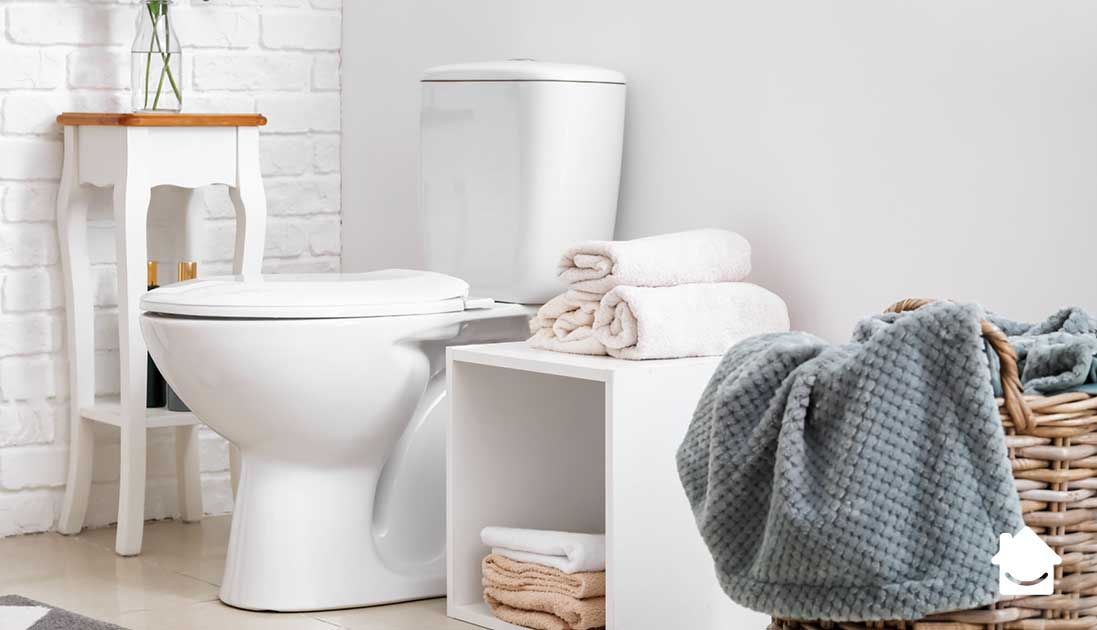

Have you ever experienced visiting a new toilet somewhere, only to be met with horrible stains at the bottom of the bowl? Gruesome, isn’t it? But these stains are not always caused by what you think, and it’s often not as bad as it looks.
Rather than the unpleasantries you might expect, the stains you see at the bottom of a toilet are caused by calcium carbonate—more often referred to as limescale. Limescale appears as a result of water travelling through certain types of rock, such as chalk and limestone, on its journey through reservoirs and to our home water systems.
Despite the UK having some of the highest water quality in the world, removing minerals such as calcium carbonate is really difficult. Although limescale poses no risk to our health, it will build up in appliances such as your kettle, and eventually cause damage to your dishwasher and washing machine if you don’t take preventative action. Another bathroom facility prone to limescale build-up is taps.
In the bathroom, limescale usually appears as a white powdery film on taps and shower heads, as white droplets on mirrors and tiles, and grey/green stains under the taps in your bath. You might notice the staining in your toilet bowl takes on an orange, pink, or brown tint. This is a result of the calcium carbonate mixing with an iron or manganese compound. This can happen around your taps too, but is more common in the toilet bowl. This is because the mineral-rich water sits there for longer, giving the minerals a chance to take hold on the surfaces of the toilet much more rapidly and effectively.
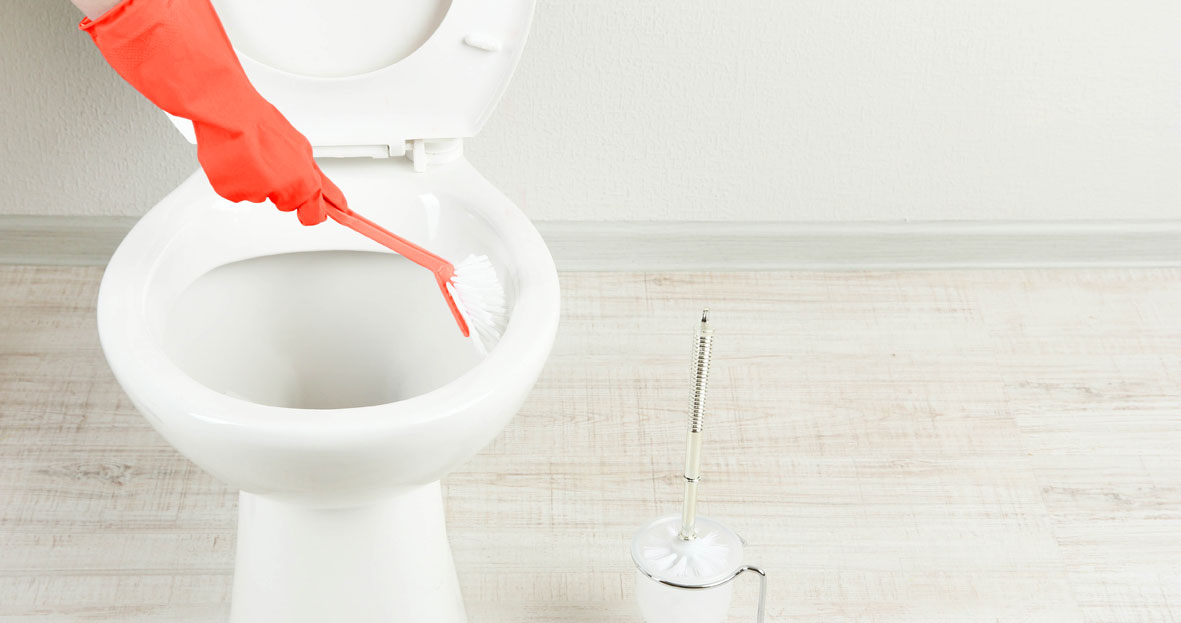 Removing limescale – the myths
Removing limescale – the mythsYou may have heard a rumour floating about that bleach will remove limescale. This is no more than a myth.
What it does do, however, is remove the colouring from the limescale so that it is less noticeable. Unfortunately, this can lead us to believe that the limescale has been eradicated. By continuing to use the bleach, we are allowing limescale to build up invisibly, rather than getting rid completely. Bleach is a fabulous way to keep your toilet clean of germs, but not limescale.
Another common myth is the idea of removing limescale with a cistern block. It is true that many cistern blocks will reduce limescale by using a calcium dissolving agent, but they simply can’t remove it completely. To have a high enough volume of limescale dissolvent in such a little block of material would be highly toxic, and too dangerous to have in your home.
Having established that the staining in your toilet may not be as yucky as you were thinking, you can now start dealing with the problem.
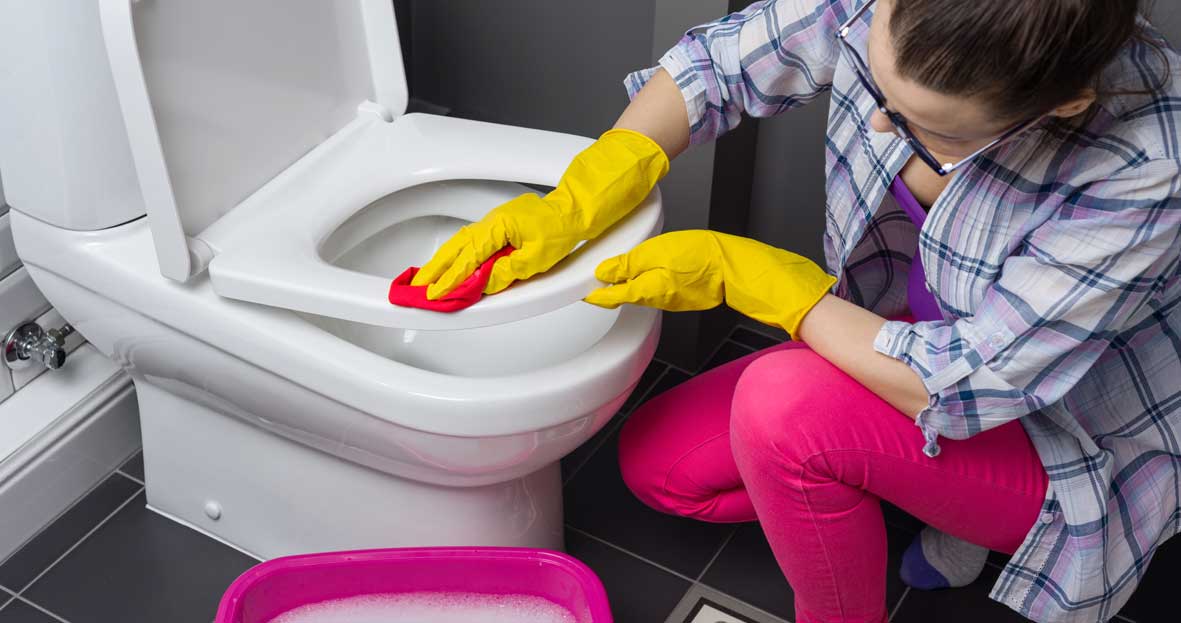
When performing a thorough clean of your toilet bowl, here are some of the key tools and equipment you will need:
When you’re looking to clean a dirty toilet bowl, it’s best to first do some basic cleaning in order to understand the extent of the staining.
Hopefully you will notice an improvement in the surface staining, and if you’re really lucky your toilet will be gleaming. Job done!
If that’s not the case, and some stubborn stains remain—perhaps your toilet has been neglected for a little while—don’t despair. It’s time to move on to phase two.
Now, we have every confidence that toilet cleaners should do a stand up job, but if it does fail, why not try out some more uncommon toilet cleaning conventions?
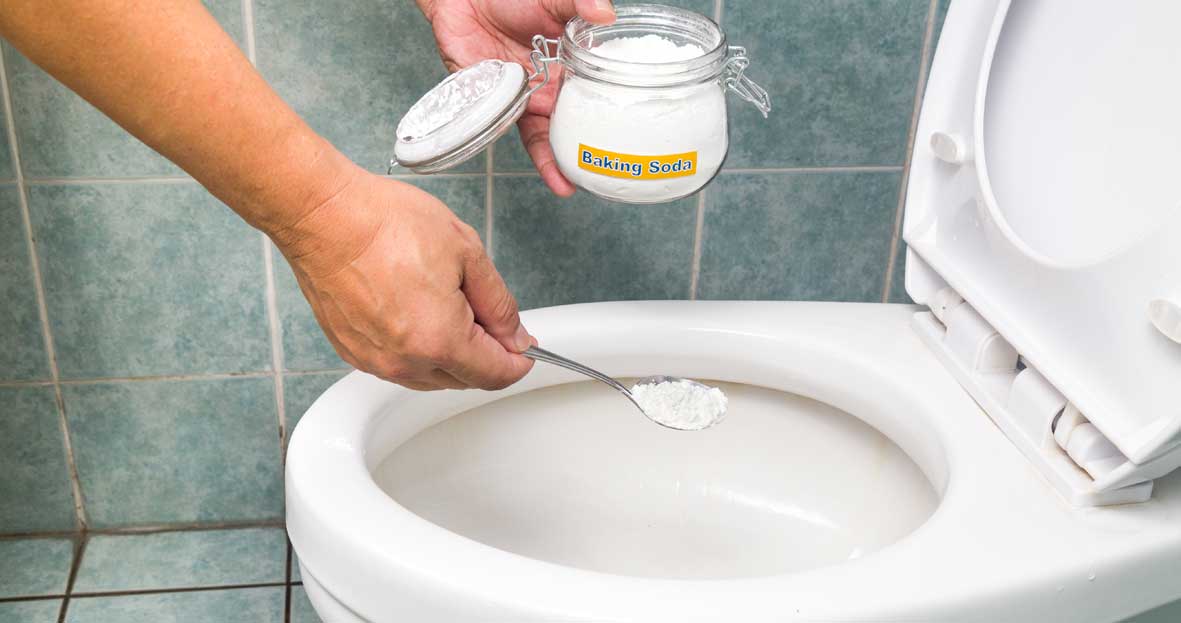
Baking soda is a wonderful natural cleaning agent—good news if you are concerned about the effects of harsh chemicals on the environment. When combined with vinegar it creates carbonic acid, which actually dissolves limescale. Here’s how to do it…
Put on your gloves and pour 250ml of vinegar into the toilet bowl. Swirl it around with the toilet brush and leave it to sit for five minutes. It’s a good idea to keep the bathroom door closed between stages to prevent your entire house smelling like vinegar.
Now add about 200 grams of baking soda, and another 250ml vinegar to your toilet. The mixture will fizz and bubble like something in a mad scientist’s laboratory—that’s exactly what we want. Leave it to do its work for about five minutes, once again with the toilet door closed.
Wearing your gloves, scrub away with your toilet brush, and flush. Hopefully you have a scintillatingly clean toilet.
Top tip—if you have stained grouting, you can use the same approach there too. Put your vinegar in a spray bottle and soak the grout, then, wearing rubber gloves, work baking soda into the grout with an old toothbrush, leave for 20 minutes and then rinse.
Sure, it sounds bizarre, but for toilets that have those brownish stains, Coca Cola can have an excellent cleaning effect. From our very unscientific online survey of this subject, the results are about 50/50 on whether this works or not. You also need to be patient, and have a reasonable degree of control over who uses the toilet!
To give this a real chance, you need to be sure that nobody is going to use the toilet for at least four hours. Simply pour a full can of Coca Cola around the rim so that every millimetre of porcelain is coated. Leave it to sit for every minute of those four hours. Scrub away with the toilet brush and then flush. If you’re in the lucky 50%, you’ll have a glacier-clean toilet.
If neither of our first two approaches worked, you’re dealing with a really, really obstinate stain—but don’t worry, not all hope is lost. Grab two grades of sandpaper—medium and fine—and cut them into circles about the size of a coffee mug rim.
This stops you from sanding too far either side of the stain. Fold the medium-grade circle into quarters with the sandpaper side out, and then put your fingers inside the little cone shape you’ve made. This gives you a precision sanding tool. Don’t forget to put your rubber gloves on first!
Use an old rag to dry the area of the stain, and simply begin to rub gently in a circular movement, from the outside of the stain to its inner areas. Don’t press too hard as you may scratch the surface.
Repeat the process with the fine-grained sandpaper to gently buff away the rest of the stain. Cover the area with a toilet cleaning product designed to remove limescale and leave for ten minutes before flushing.
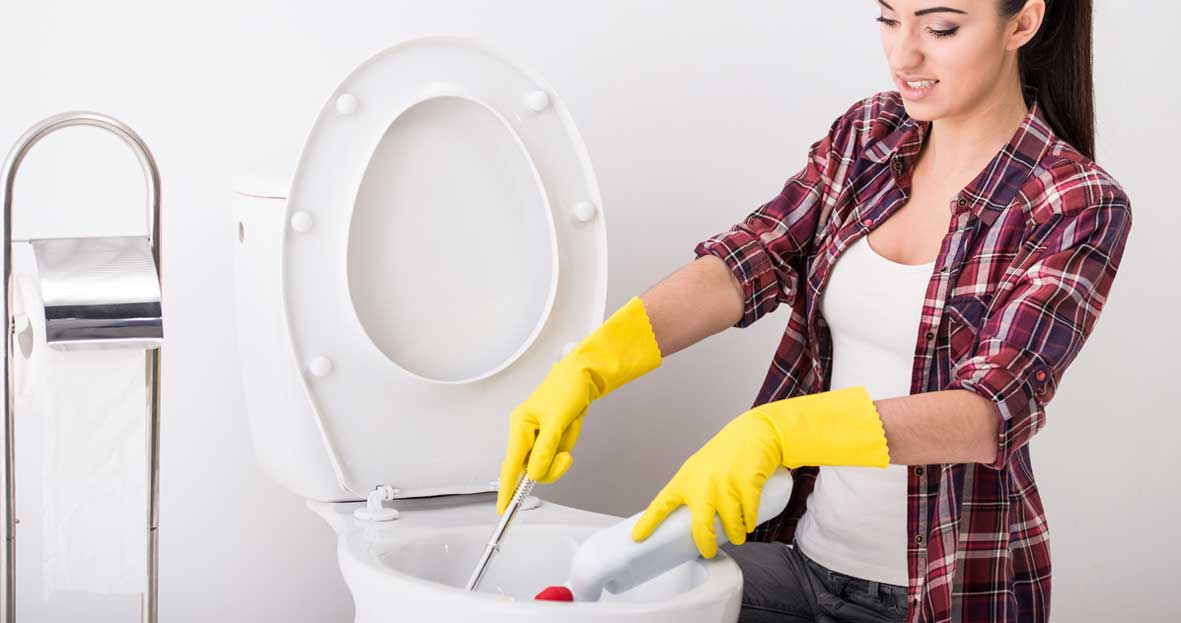 Cleaning a toilet with bleach
Cleaning a toilet with bleachHousehold bleach is a fabulous tool, able to kill just about every kind of bacteria and virus. It also reduces the colour of stains. It’s best to use bleach overnight so that it has the maximum time to destroy as many germs as possible. Many people find the smell of bleach overpowering, so it’s best to leave the bathroom window open while you’re bleaching the toilet.
It’s great to get rid of those horrible toilet stains, but how do you keep them away? All it takes is a monthly deep clean and you’ll never again have to fight to eradicate toilet stains. Just add around 125 ml of vinegar to your toilet bowl, leave for half an hour, and top it up with some baking soda sprinkled on the toilet brush. Have a good scour around to deal with the build up of stains.
If you can’t get rid of that ‘public toilet’ bathroom smell, then it’s time to use your screwdriver. First, unscrew and remove the toilet lid and seat. Cover the screwdriver head with a cleaning cloth sprinkled with disinfectant, and clean the area under the tank and around the screw-holes, poking the cloth into those hard to reach areas.
It’s amazing how much of a difference this can make. Replace the lid and seat and you’ll probably find your bathroom smells alpine fresh. Repeat this task at least every six months, or more often if it starts to smell a bit whiffy.
In order to keep the outside of your toilet looking fresh and clean, all you need is some good old fashioned baby oil. Pop a few drops on a cleaning cloth and you can easily remove limescale stains from the toilet handle, taps, and shower fixings.
Not only that—the very light film left behind when you polish your stainless steel fixtures with mineral oil actually prevents limescale from gripping onto the surfaces. You can also use this to polish up the outside of the toilet tank and bowl, giving the porcelain a limescale preventative shine. Just repeating this process once a month will keep your toilet and fixtures looking cleaner for longer.
In terms of bathroom troubles, toilet stains are mostly a cosmetic issue, and easy to fix. The same can’t be said for a toilet that won’t flush, or a leaking waste pipe. Make sure you’re ready for anything with our Plumbing and Drainage cover—you can never be too prepared.
Our help & advice articles cover Plumbing, Home heating, Electrical, Energy-saving and Home maintenance.